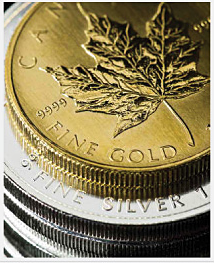What Is Money?
Definitions
What is money? The answer is quite simple: it is a medium of exchange. And because it assures exchangeability of goods, this allows for savings, or a ‘store’ of value.
But when we look at the present international monetary system, each currency unit diminishes in value over time. It seems that this ‘money’ does not adequately store value, and could not be as assuredly exchanged for goods over long periods.
Where is this discrepancy between our definition of money, and the actual system in place, coming from?
Fiat
We live in a fiat monetary system (fiat: value derived from decree). This means that the money in your pocket has value based solely on the dictates of governments.
With fiat, the money supply is never stable, and continuously rises. The increase in money supply is known as inflation. Although you have probably been accustomed to hearing ‘inflation’ in terms of the increase in prices, such price inflation is only secondary to monetary inflation, or a symptom of it.
More supply of something makes for lower prices. This is applicable to money and interest, the latter being the price of loans. When the money supply increases, interest rates go down.
How does such a process of money creation occur? There are two main methods, which involve the creation of more debt on top of debt.
How inflation happens
The first method is called fractional reserve banking (FRB). When a depositor makes a deposit in a bank, only a small percentage of this actually stays with the bank, with the rest loaned out to other bank clients. Banks can afford to risk loaning out funds that are supposed to stay within the bank, in large part because the government provides ‘deposit insurance,’ thus giving an air of legitimacy to FRB. Without this institutionalization of FRB, banks would always be at risk of a bank run, where depositors hurry to withdraw their deposits before other depositors.
Even insurance of deposits by government is an illusion, because there are no funds to pay depositors in the case of such bank runs. The current FRB system runs on this baseless faith, and not without severe consequences, as we will see below.
How much can money be multiplied via FRB? Let us say the central bank sets a 10% reserve requirement, that is, only 10% of deposits need remain in the bank, with 90% being loaned out.
With a deposit of S$200, only 10% or S$20 stays with the bank, with S$180 being loaned to other clients and deposited elsewhere in the system.
Of this S$180, only S$18 stays with the bank in which the funds are deposited, and S$162 loaned out.
Of this S$162, only S$16.20 stays with the bank in which the funds are deposited, and S$145.80 loaned out.
And so on, till the total money supply increases tenfold, where the S$200 turns to S$2,000. The following equation shows this:
Money Supply = Original Deposits / % Reserve Requirement
On top of FRB, another method for expanding or contracting the money supply entails a government’s Treasury or monetary authority issuing securities, which are offered to select entities and institutions. This new debt is then purchased or sold by a central bank, through what in Singapore are called money market operations. The central bank can expand or contract the money supply by adjusting the amount of securities it sells (contractionary) and purchases (expansionary) at any given time.
There are other means by which money supply increases, and they are variations of the above, such as the central bank offering loans in its ‘discount window’ to banks, which allows for increased lending/debt between banks and to clients.
Although monetary inflation is often referred to as ‘printing money,’ there need not be an actual printing of the bills. All that needs to be done to increase the money supply is to increase the credit extended to clients, who then have this transferred to their bank accounts. Actual paper cash constitutes about 10% of money supply in most countries.
Effects of inflation
The most apparent effect of monetary inflation is an increase in prices. When there is more money circulating in an economy, people bid prices up.
Eventually, because this kind of an economy is based on more and more debt in relation to production, defaults on loans become more likely. When this happens, the bubble in prices bursts. Because of the losses involved, many companies lose money, and unemployment rises. We call this a recession.
To keep this from happening, a government can try to increase the rate of credit expansion, but this just makes the currency less stable. After all, the interest on loans is premised on profits and savings, which would in turn be transferred once more to banks for loaning out to other clients. But when there is less production and more borrowing, there is no such interest that can be paid, unless via more borrowing. The situation is like a Ponzi scheme where the paying off of one’s debts is only possible by incurring more debt.
Alternative to fiat: Market-determined money
We now understand enough to see that the current monetary system, far from being ideal, is even worse than whatever system may have preceded it, the imperfections of which were pretexts for government meddling. The concept of money and its importance to economic progress must be salvaged if things are to get better.
Even before it becomes stock knowledge among the populace what constitutes sound money, one can take measures to protect their wealth by placing their savings in assets that more closely correspond to our ‘ideal’ definition of money as medium of exchange and store of value. By now, you surely know we are referring to gold and silver, but let us consider what makes them more suited as money than anything else.
 |
1. Durability It would do no good to store something that decomposes or falls apart over time. 2. Rarity In order for transactions to be manageable, the supply of the medium of exchange has to be rare enough. 3. Divisibility The medium should be divisible in various quantities, without affecting quality. 4. Homogeneity One unit of the medium should be essentially of the same physical qualities as other units of the medium elsewhere. |
It so happens that these characteristics are best met by gold and silver, which have been the choice of markets for many millennia, with governments managing to supplant market preferences over short periods. Once any pretense of being backed by precious metals is given up, a currency becomes more and more unstable. This holds true even for reserve currencies with a long history, such as the US dollar, which departed for good from gold in 1971, and has depreciated exponentially since.
Our monetary system since the first half of the 20th century is the longest-lasting in which fiat has managed to survive, but the situation is becoming increasingly fragile. Debt of even the most developed countries has become unserviceable, and the only way such debt could be paid is through further debt and currency debasement, which ruins economies.
We call it when inflation gets out of hand, and money supply continues to multiply over shorter and shorter periods of time. Prices go up so high within a single day. In Germany in 1923, hyperinflation made people rush to stores after being paid for the day, because buying goods the next day with the same amount of money would be impossible! The incentive to consume, rather than produce, is magnified, and when producers stop producing, existent goods become rarer and pricier, a vicious cycle. More recently, Zimbabwe experienced hyperinflation, where billion-dollar notes, which couldn’t be exchanged for as much as you think, actually became currency.
It isn’t enough to call for a ‘gold standard’ while nonetheless sanctioning FRB, which could still set forth the disruptive crises discussed above. Certificates of deposit for gold must correspond, one is to one, with actual gold deposited. Otherwise, we are subject to the ‘gold exchange standard’ that made the Great Depression possible 80 years ago.
A 100%-backed gold standard would mean one’s savings remain intact. Since savings are encouraged, more capital can be devoted to investment, making for more efficient production. With greater output of goods and services, prices go down, and each unit of money able to buy more.
To think that in these present times, constant inflation as measured by prices is considered healthy! In fact, price indexes tend to fall during times of high savings and productivity.
With all this knowledge, what is one to do? It seems fairly simple to say “Buy gold and silver,” but with all the options out there, such as mining stocks and exchange-traded funds, you might lose sight of what is essential. For example, much of these investments deal with the trade of paper gold or paper silver, that is, you do not actually own specific units of precious metals. These paper markets are subject to the same instability as other fiat-based instruments. Even if you dabble with these, make sure you apportion enough in the physical stuff, wherein you are assured of the knowledge of the whereabouts of what you own.
Conclusion
Money, in fact, pertains not to certain assets, but to the properties they exhibit, properties of which if absent, would render the asset inadequate as a medium of exchange.
Fortunately, we still have access to real, market-determined money. Gold and silver, which have all the characteristics that make for money, are necessary for preserving your savings amidst government foolishness we see all around us and as exemplified by a self-destructive fiat system.










